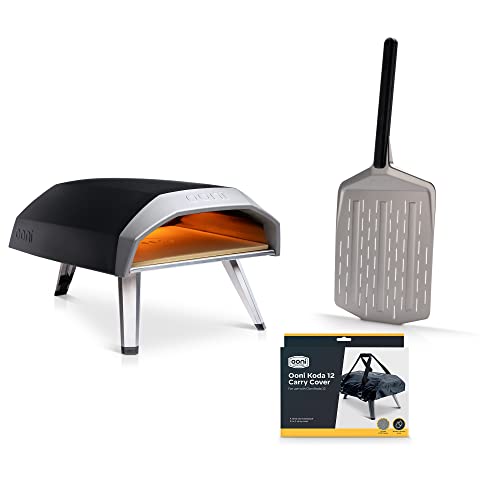Which smart sous-vide champ cooks faster, smarter, and with less kitchen ego—Anova or Joule?
Two compact sous‑vide stars fight for counter space: Anova Nano 2.0 and the sleek Joule. This short, slightly snarky guide slices through specs, hype, and apps so you can pick the tiny cooker that actually earns a permanent countertop spot.
Budget Precision
A budget-friendly sous vide that still delivers professional-level accuracy and consistent results. Best for home cooks who want reliable precision without splurging, though it trades raw power and premium feel for value.
Speed Champion
A top-tier compact sous vide that prioritizes speed, design, and app-driven convenience for enthusiasts who value performance and minimal footprint. It’s ideal if you want fast heat-up and a premium user experience, but expect to rely on the app for most controls.
Anova Nano
Joule Sous‑Vide
Anova Nano
Joule Sous‑Vide
Anova Nano
Joule Sous‑Vide
Sous Vide Showdown: Anova vs. Joule
Design & Build: Minimalist Chic vs. Sleek Magician
Anova Nano 2.0 — Minimalist Chic
The Nano 2.0 leans utilitarian: matte black body, a practical clamp, and a no‑nonsense silhouette that says “I work in a kitchen.” It’s mostly food‑safe plastic (lightweight but not luxe), stands about 12.8″ tall and 2.2″ wide, and uses a simple status LED to communicate power/heat. The clamp is easy to attach to most saucepans, and the compact footprint keeps it stable in shallow pots.
Joule 4186JW120B — Sleek Magician
Joule’s aesthetic is the opposite: a glossy, all‑white polycarbonate wand that looks engineered for a design‑studio shelf. At 11″ tall and just under 2″ across, it’s slimmer and easier to tuck into a drawer or a travel bag. There are no physical controls — the app is the interface — and a small status light shows activity. Joule’s magnetic base and clean lines make it Instagram‑ready; it photographs like it belongs next to a marble board and a perfectly seared steak.
Performance & Precision: Wattage, Heating Speed, and Accuracy
Wattage & Heating Speed
Joule packs a 1100W punch; Anova Nano 2.0 runs about 800W. That gap isn’t just bragging rights — it shows up in how fast water heats and how quickly the unit recovers after you add cold food.
Temperature Accuracy & Stabilization
Anova advertises ±0.1°C (0.2°F) control — that’s laser‑precise on paper. Joule is equally stable in real kitchens; many users and tests show temperature hold within a few tenths of a degree. In practice, both keep food in the same narrow band once stabilized.
Circulation Strength, Maximum Capacity & Recovery
Joule’s compact pump moves water strongly for its size, so it handles larger pots and multiple bags without hot spots. Nano’s circulation is adequate for 1–3 steaks in a saucepan or small water bath, but expect longer recovery and slightly more temperature wobble when you toss in a dozen frozen beans or a big roaster.
Edge Cases: Long Cooks, Near‑Freezing Starts, and Safety
For multi‑day roasts both stay put; Joule’s higher wattage shortens the painful preheat after a near‑freezing start. Both units include low‑water protections and automatic safety cutoffs; firmware updates from each brand have improved PID responses, preheat time estimates, and app‑based optimizations, so keep the software current for best accuracy and longevity.
Feature Comparison Chart
Usability & Ecosystem: App, Recipes, and Everyday Habits
App & Connectivity
Anova Nano 2.0 is Bluetooth-only, so your phone has to be within range to start, monitor, or get notifications. Joule offers both Bluetooth and Wi‑Fi, so you can preheat from the car or the couch — very handy if dinner plans change last minute. Both rely heavily on their apps; neither has meaningful physical controls on the unit itself.
Guided Recipes, Notifications & Voice
Joule’s app feels polished and chefy: visual doneness sliders, step‑by‑step guides, and lots of video-driven recipes. It also integrates with Wi‑Fi for remote notifications and works with voice assistants (Alexa integrations exist), so you can ask Alexa how long is left. Anova’s app is simpler, with solid presets and a big community recipe pool — notifications work, but only when your phone is nearby.
Mounting, Noise & Cleaning
Anova uses a spring clip that grips almost any pot rim — reliable for weird kitchenware. Joule’s magnetic base is brilliant on stainless stockpots but useless on glass or enamel (you’ll need an adapter or clamp). Both are quiet enough to forget — a gentle hum, not a hairdryer. Wipe the body clean and rinse the lower skirt per instructions; neither unit requires dramatic maintenance.
Accessories & Community Influence
Community and recipe libraries shape what you’ll cook: Joule nudges you toward precision, techy recipes; Anova’s broader user content makes it easier to find everyday comfort-food sous‑vide hacks.
Price, Value, and Who Should Buy Which
Sticker Price & Warranty
The numbers are blunt: Anova Nano 2.0 ≈ $67; Joule ≈ $294. Both come with the standard 1‑year limited manufacturer warranty and active app support. Bottom line: Anova is a low-cost entry into real sous‑vide; Joule is a premium, high‑performance purchase.
Accessories & Potential Hidden Costs
Both work straight out of the box, but useful extras add up.
Expect to spend an extra $20–$100 for a sensible setup beyond the core unit, depending on whether you buy a vacuum sealer or a proper container.
Who Should Buy Which
Pick the Nano to save cash and learn sous‑vide fundamentals. Pick Joule if speed, compact luxury, and remote control are worth the price.
Final Verdict: Pick Your Tiny Titan
Joule wins — speed, slim looks and app-first precision make it the tiny champion.
Buy Joule if you crave rapid, sleek, app-driven results. Choose Anova Nano 2.0 for budget-friendly, plug-and-play reliability. Ready to pick one?











Family of 5 here — which one actually shortens total cook time? I know sous-vide isn’t about speed, but recovery time when adding multiple bags matters.
Would love a no-nonsense answer: Joule or Anova for multi-bag weekday dinners?
Anova for family dinners. Also consider a wider container and preheated water to help with recovery.
Preheat and give yourself a buffer. I do 2-3 bags in a 12L container with my Anova and it’s smooth.
For multiple bags and larger water volumes, Anova (stronger clamp, steadier output) tends to recover better overall. Joule handles small batches quickly but struggles a bit with large setups.
Really enjoyed the write-up — clear and funny 😂
I’ve been using the Anova Nano 2.0 for a year and it’s been super reliable for everyday meals. The app is decent and the clamp is solid.
That said, the Joule is ridiculously compact and heats fast. If I lived in a tiny apartment I’d consider it.
My verdict: Anova for reliability and price, Joule for speed and minimal counter real estate.
Also: anyone else miss the old physical dial on older models? I do. Typing on my phone while dinner�s in water feels weird.
Thanks Sarah — glad the tone landed! Good point about the physical controls. We debated that in the office too; Joule’s size lost the dial but kept the wow factor.
I sold my old clip-on for a Joule and honestly the lack of dial took a week to get used to. Now I just love how tiny it is. Battery? nope, but it�s not a big deal.
Agree on Anova’s clamp — feels more robust than Joule�s magnetic dock. But Joule looks sleeker on the counter.
I gotta say — I’m a bit annoyed by walled garden apps. Joule’s app is slick but too controlling (recipes locked, need account, ugh).
Anova’s app is fine and lets me mess with temps without signing into a fortress.
Functionally they’re both great, but user freedom wins for me. Also, Joule’s tiny size is cute but I worry about longevity — feels plastic-y.
You can export temps and times manually and use printed recipes. Old-school but liberating 😅
I agree on the ‘plastic-y’ feeling. My Joule looked pristine at first, but after a year it had tiny scratches. Not a dealbreaker tho.
If you’re into tinkering, Anova has more third-party recipes and community stuff. That helped me stick with it.
Fair point on accounts and ecosystems. We flagged the account/recipe lock issue in the article. Manufacturers are pushing for that model more and more.
Tiny cookers, big drama indeed. I’m team “does it make my steak perfect?” and both do, so who cares about aesthetics.
Also, Joule’s 1100W seems like overkill but it boils down to recovery time, right?
TL;DR: Buy whichever one fits your kitchen vibes and patience level.
Yep, wattage = faster recovery. If you sous-vide large volumes (big bags), higher watt helps. But for single bags, both are fine.
Exactly — wattage matters with volume. We included a recovery time test in the article if you want numbers.
Quick question — which is better for fish/simple proteins vs. big roasts? I’m thinking Joule for fish (fast, small) but Anova for roasts since I do big 5-lb things occasionally.
I use Joule for salmon and Anova for big pork shoulders. Both shine in their niches.
You’re on the right track. Joule is great for quick, precise fish cooks and small batches. Anova’s higher capacity (and clamp) is better for larger volumes and longer cooks.
Low-key love for the Joule here. Tiny footprint, fast recovery on smaller pots, and it looks like a spaceship. If aesthetics matter, Joule wins.
Would recommend for single people/couples.
Thanks — that’s exactly the audience we called out in the conclusion. Joule is a lifestyle piece as much as a tool.
Totally. Bought Joule for my studio apartment and couldn’t be happier.
Build quality: Anova feels heavier and like it will survive a drop. Joule is elegant but light — I worry about long-term durability.
Don’t get me wrong, Joule is brilliant for small kitchens. But if you want something that’ll last through years of weekly use, Anova feels safer.
Also, price drops happen — wait for sales if you’re not urgent.
Solid advice. We included a recommendation to watch for seasonal sales in the buying guide portion — good tip to wait unless you need it now.
If you’re clumsy like me, Anova’s bulk is a feature, not a bug 🤦♂️
I had an Anova unit last 4 years with heavy weekly use. The Joule I tried looked pristine but had software updates that stopped working on my old phone.
Anova’s weight also helps it stay put in windier setups (open pots, etc.). Joule’s magnet is great but sometimes needs a helper clip.
I liked the comparison table but wish there was a section on app reliability.
I’ve had the Joule disconnect over bluetooth mid-cook once (woke up to medium-rare instead of rare 😩). Anova’s Wi‑Fi has had fewer hiccups for me.
Anyone else experienced connection drama?
Good catch — app/connectivity variations show up a lot. We tested both over different phones and networks; results varied. We’ll add a note about dedicated-device troubleshooting.
I never had a disconnect with Joule, but I keep it on the same Wi-Fi and close other heavy network tasks. YMMV.
Yes! My Joule dropped once too. I started using a dedicated phone for cooking and it fixed things. Not ideal but it worked.
FWIW, Bluetooth is more flaky than Wi‑Fi for me across devices. If you can use Wi‑Fi, it’s usually steadier.